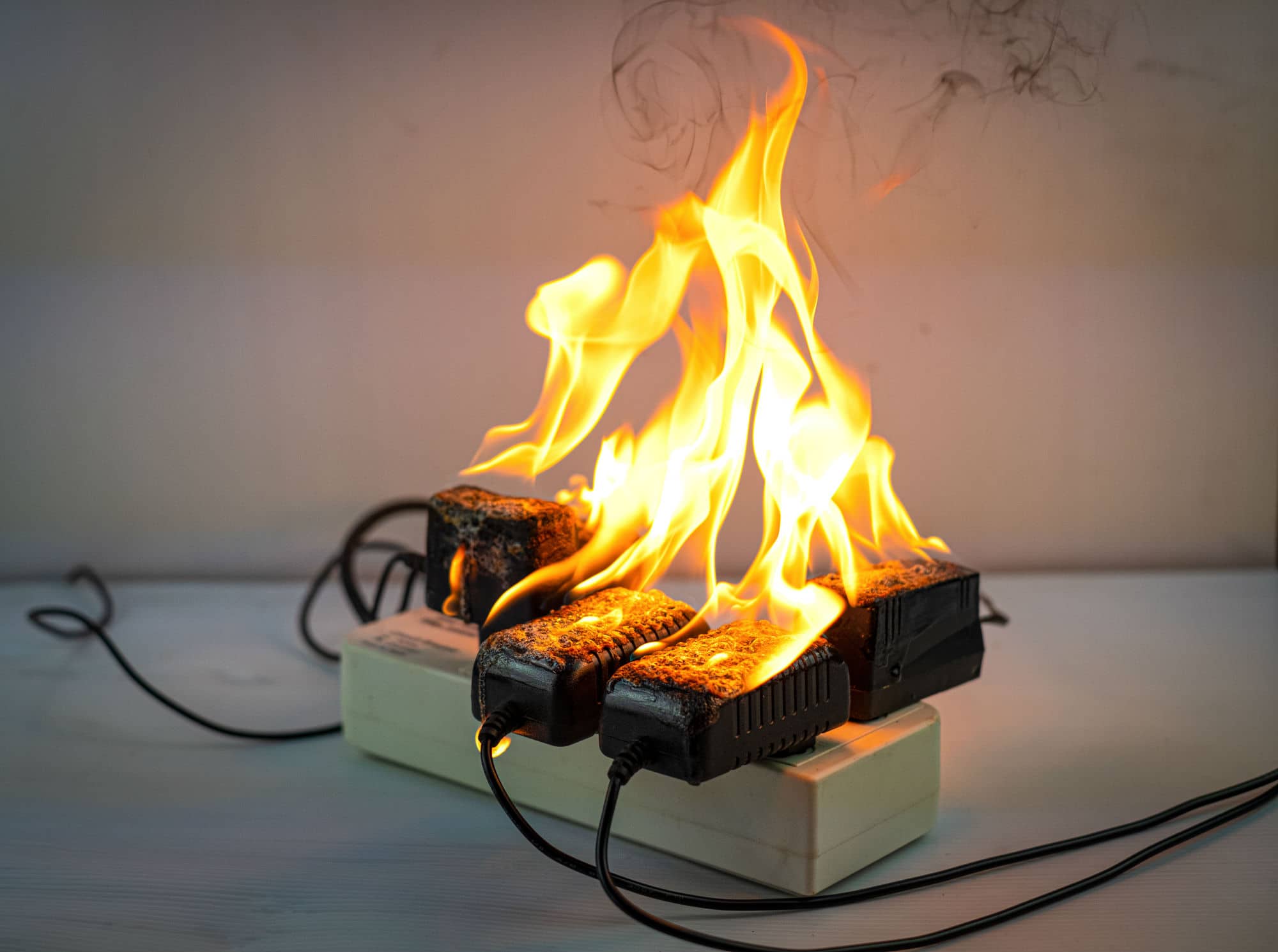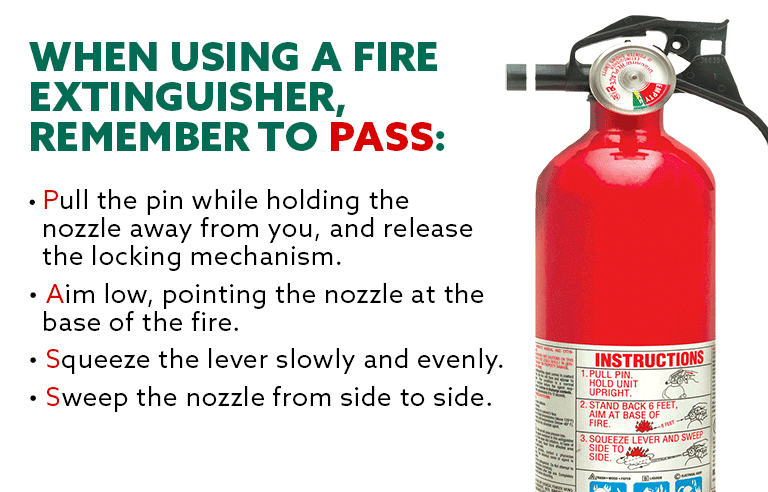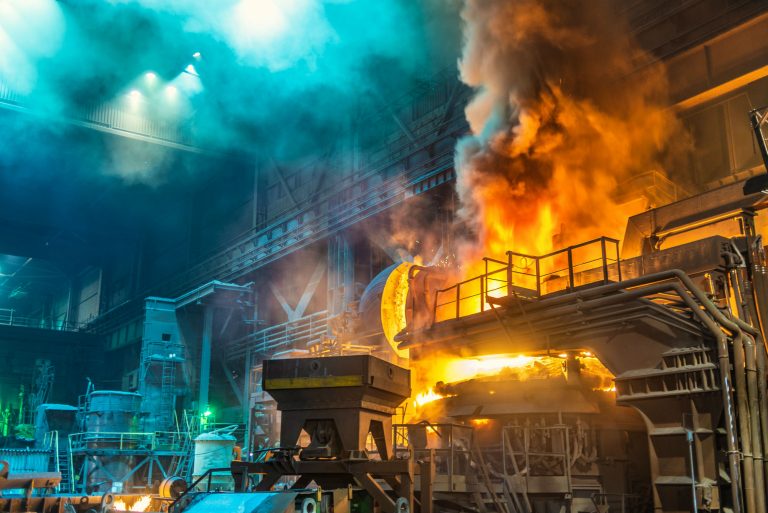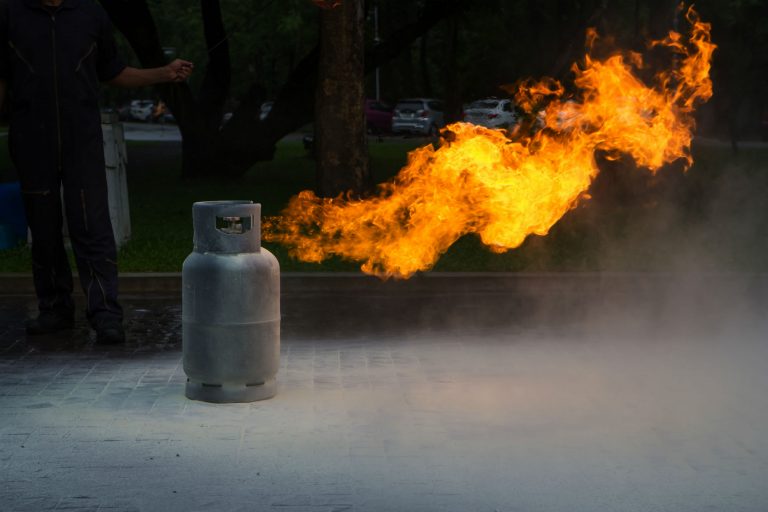Class E fires are one of the more common fires to ignite in a home or office, with a high number of electronic devices populating most homes in the modern age it is wise to know what kinds of fire extinguishers are safe to use if they occur.
When we talk about items that can cause a Class E fire, we’re talking about objects that we use every day in our personal and professional lives, consider for example your phone on a charger, or perhaps your PC. What about your toaster, or other kitchen appliances such as corded kettles, coffee makers, and microwaves? Thinking about the number of electronic devices scattered around a home or office at any given time, you can see why a Class E fire might be a more common hazard.
To give you a clearer example of this, we’ve compiled a non-exhaustive list of items that can cause a Class E fire in everyday environments, and which can be put out with a dry powder fire extinguisher, or carbon dioxide fire extinguisher:
- Frayed wiring – can happen on any appliance with a cord, TVs, fridges, microwaves, kettles, DVD players, computers, gaming consoles.
- Overheating – can be caused by using the incorrect chargers or not allowing your electronics ventilation, phone chargers, computers and laptops, tablets, bar fridges.
- Appliances that get hot – any appliance that heats up on its own can cause an electrical fire if not supervised, an electric pan, waffle iron, toaster, space heater, hair straightener.
- Using the incorrect cord – using a cord to connect devices to an outlet that are not made to carry the load, extension cords, plug splitters, or multi adapters.
As you can see from this list, fires can start in any area of your home, garage, factory, workspace or office; however, by far the most common place for a fire to start is in a kitchen, whether that’s at home, a kitchenette in your office or a full commercial restaurant kitchen.
And, while the causes of home and workplace fires vary greatly, some of the most common ways in which a fire can take hold is from:
- using the incorrect grade of extension cord to charge an appliance or electric car
- chargers and connected devices overheating
- frayed wiring causing carpet or curtains to catch fire
- leaving clothes or other objects on a space heater

Which fire extinguishers can be used on a Class E fire?
Dry chemical fire extinguishers and carbon dioxide fire extinguishers can be used on a Class E fire.
Dry Chemical Fire Extinguishers (aka Dry Powder Fire Extinguishers)
Very common for Class E fires, dry chemical fire extinguishers work by smothering the fire and removing oxygen. Care should be taken when using a dry powder fire extinguisher on a Class E fire in a confined area, as it can cause breathing, eye and skin irritations.
Carbon Dioxide Fire Extinguishers
Carbon dioxide fire . extinguishers work by stripping fire of oxygen, while also reducing heat with cold discharge. Carbon dioxide fire extinguishers are particularly useful around electrical equipment or machinery, and are often marked with a black band.
As always care should be taken when using a carbon dioxide fire extinguisher in a confined space, as oxygen is being removed from the area, this can become dangerous for the user.
How do I use a fire extinguisher on a Class E fire?
While it might look like an easy thing to do, actually actioning a fire extinguisher can be more difficult than it looks… especially in the middle of a fire emergency!
We highly recommend regular workplace training at which our fire experts will give your team hands-on experience in using the PASS method of fire suppression:
- P – pull the pin on the fire extinguisher handle
- A – aim your fire extinguisher at the fire
- S – squeeze the handle firmly but gently to start the flow of carbon dioxide, dry powder, etc
- S – sweep the fire extinguisher across the seat of the fire
Workplace fire training not only helps your team learn what to do in the event of a fire incident, but will also help them be more fire safe in their own home. We recommend workplace fire training every 6 months or when you have a new intake of staff.
A good way to remember to book a workplace fire safety training session is to review your level of competency whenever daylight savings comes around.

When should I use a fire extinguisher on a Class E fire?
If a Class E fire breaks out in your workplace you should follow the management and evacuation process that has previously been agreed upon.
While your workplace may differ, the most common process is for you to immediately call 000 (triple zero) and ask for the fire brigade; the operator will ask you for the type of emergency, your address, suburb and any other information that will be useful to emergency services personnel who are turned out to attend the incident.
You should then raise the alarm to alert co-workers and give them time to evacuate the building. Once everyone has left the building or area, no one should go back for any reason.
If you feel it is safe to do so, you can fight a Class E fire with a dry powder fire extinguisher or carbon dioxide fire extinguisher, only if:
- the fire is small with flames shorter than you
- the fire is contained within a small space
- the fire isn’t spreading rapidly
- the room isn’t full of smoke (smoke inhalation can quickly cause unconsciousness)
- you have a clear exit path in case you need to escape the fire
- you know the cause of the fire to determine the class and correct extinguisher to use
Using the PASS method, and ensuring that you have a clear line of escape at all times, you can attempt to put the fire out prior to the arrival of emergency services personnel.
However, if you feel unsafe or unable to use a fire extinguisher, then simply don’t risk it. Evacuate the building and wait for the fire brigade to arrive and deal with the fire.
How do I ensure I have the right equipment for a Class E fire?
It makes sense that your fire safety equipment should be maintained to the highest standard so it works well when you need it most.
In a commercial setting, it is a legal requirement that you have your fire extinguishers and other fire equipment tested on a regular basis (depending on the type of business you run). Therefore, a maintenance schedule is vital to ensuring the safety of you, your staff and site visitors, and to minimise any potential damage to your premises.
Our team of fire safety experts can organise this for you, saving you the time and hassle of having to think about it for your office, factory, warehouse, body corporate, government building or workshop.
If you’d like to know more about how we can help you keep your premises and people safe from a Class E fire, please give us a call on 1800 177 915 to arrange an obligation-free visit to discuss your fire equipment service needs with one of our expert team.




